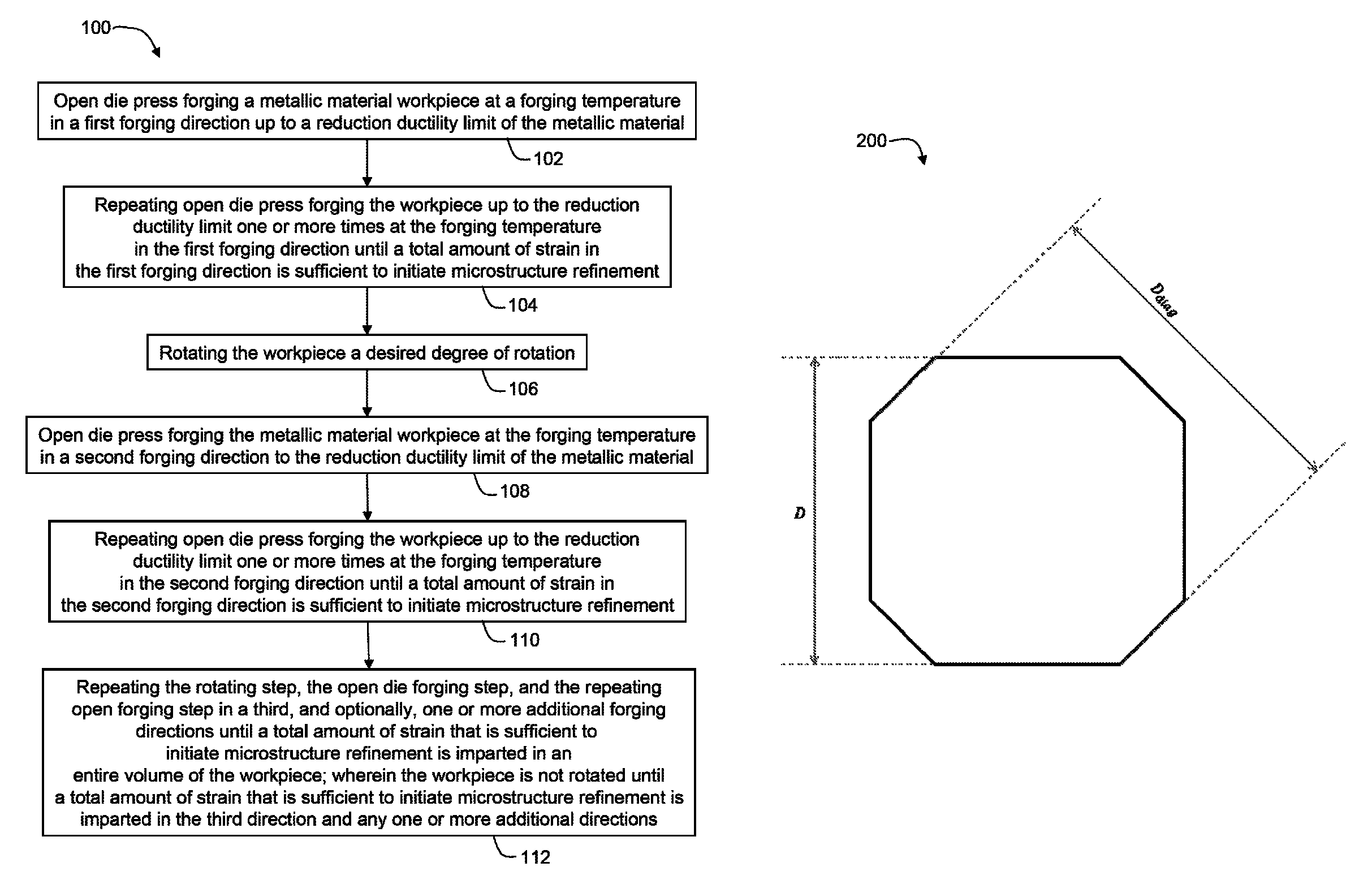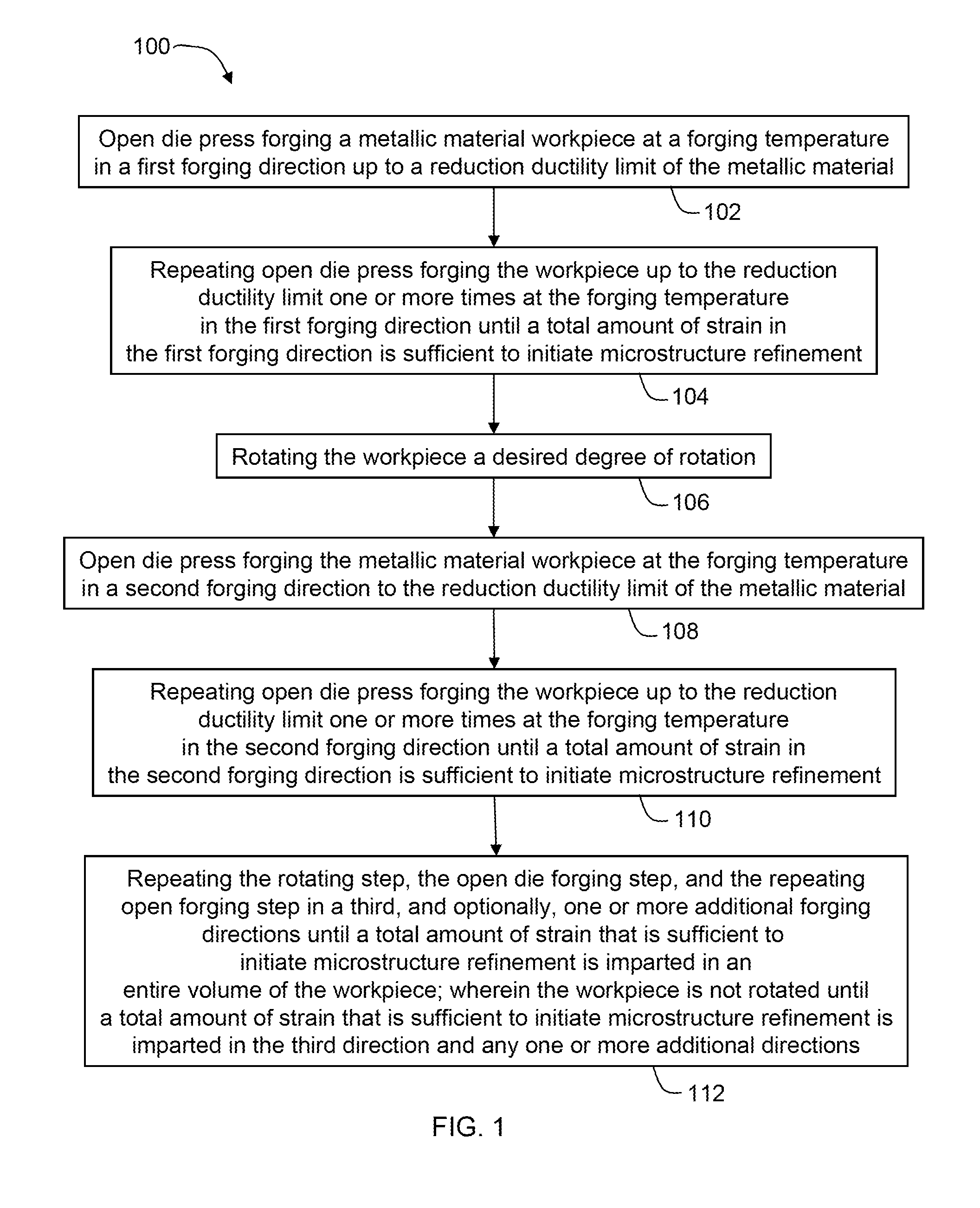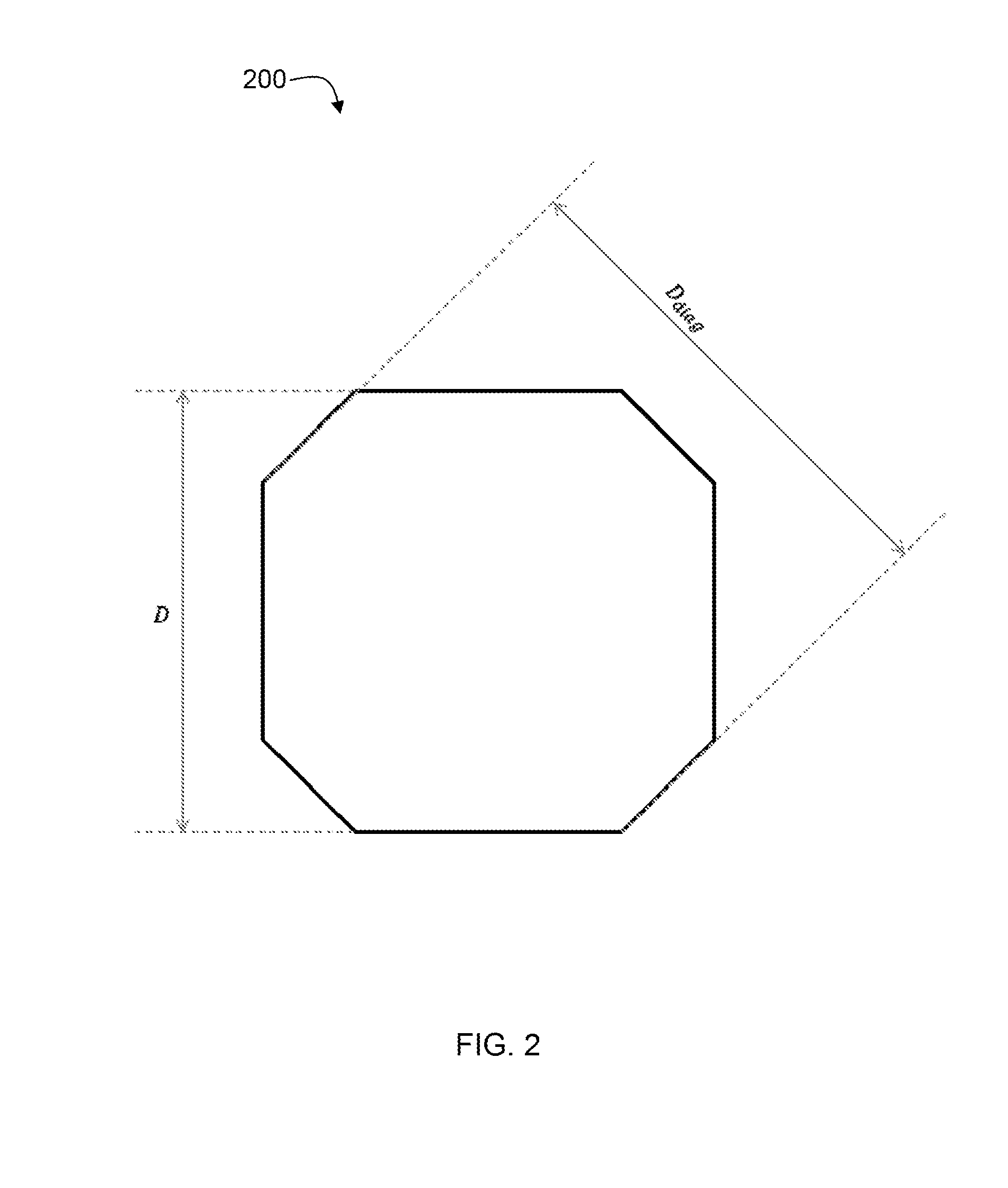Split-pass open-die forging for hard-to-forge, strain-path sensitive titanium-base and nickel-base alloys
a technology of titanium-base and nickel-base alloys, which is applied in the direction of metal-working apparatus, manufacturing tools, shaping tools, etc., can solve the problems of inability to meet the requirements of forging practice, and inability to achieve microstructure refinement through forging practice, etc., to achieve enhanced microstructure and reduce ductility
- Summary
- Abstract
- Description
- Claims
- Application Information
AI Technical Summary
Benefits of technology
Problems solved by technology
Method used
Image
Examples
example 1
[0071]A 24 inch octagonal billet comprising Ti-4Al-2.5V-1.5Fe alloy is heated to a forging temperature of 1600° F. A reduction ductility limit of the alloy at the forging temperature is estimated to be at least 2 inches per reduction and would not tolerate much more reduction in a repeated fashion without extensive cracking to be 2 inches per reduction. The billet is open die press forged in a first direction, on any face of the octagonal billet, to 22 inches. The billet is then open die press forged in the first direction to 20 inches. The billet is rotated 90° to a second direction for open die press forging. While the original octagonal billet dimension was 24 inches, due to swelling of alternate faces during forging in the first direction, the billet is open die press forged in the second direction to 24 inches. The billet is then open die press forged in the second direction two more times to 22 inches, and then to 20 inches. The billet is reheated to the forging temperature. T...
example 2
[0074]A hybrid octagon-RCS billet of a metallic material comprising Ti-6Al-4V alloy is provided. The hybrid octagon-RCS shape is a 24 inch RCS with 27.5 inch diagonals forming an octagon. The length is defined to be no more than 3×24 inches or 72 inches, and in this example the billet is 70 inches in length. In order to initiate microstructure refinement, the billet is upset forged at 1600° F. to a 26 percent reduction. After the upset reduction, the billet is about 51 inches long and its hybrid octagon-RCS cross-section is about 27.9 inch×32 inch. The billet is to be draw forged by a reduction of the 32 inch diagonals back to 24 inch faces, which is an 8 inch reduction, or 25% of the diagonal height. In doing so, it is expected that the other diagonal would swell beyond 32 inch. In the present example, a reasonable estimate for the reduction ductility limit at a forging temperature in the range of 1600° F. is that no pass should exceed a 2.5 inch reduction. Because reductions from ...
PUM
| Property | Measurement | Unit |
|---|---|---|
| temperature | aaaaa | aaaaa |
| temperature | aaaaa | aaaaa |
| beta-transus | aaaaa | aaaaa |
Abstract
Description
Claims
Application Information
 Login to View More
Login to View More - R&D
- Intellectual Property
- Life Sciences
- Materials
- Tech Scout
- Unparalleled Data Quality
- Higher Quality Content
- 60% Fewer Hallucinations
Browse by: Latest US Patents, China's latest patents, Technical Efficacy Thesaurus, Application Domain, Technology Topic, Popular Technical Reports.
© 2025 PatSnap. All rights reserved.Legal|Privacy policy|Modern Slavery Act Transparency Statement|Sitemap|About US| Contact US: help@patsnap.com



